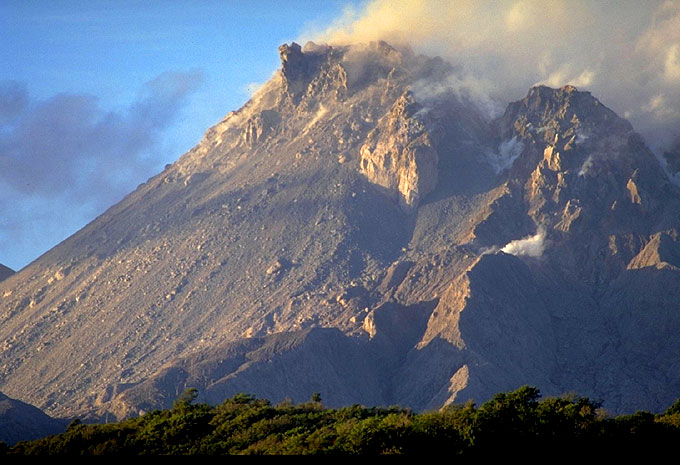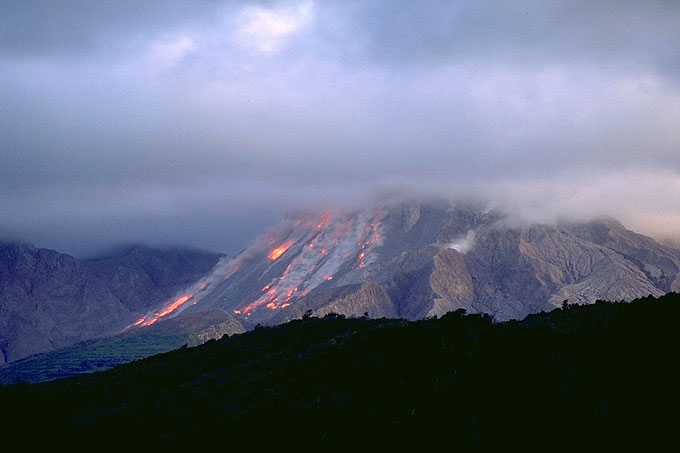 20 March 2002, 6h from Jack Boy Hill. The growing spine at the dome's top emerges from the morning fog. |  20 March 2002, 7h. As the fog disappears the whole dome, topped by the growing spine, appears. |  22 March 2002, 7h. Two days later, the spine has fallen, while another, smaller one is growing. |  22 March 2002, 7h. Continuous rockfalls, released by the growing spine, raise white trails of dust. |
 19 March 2002, 19h from Jack Boy Hill. At dusk incandescent rockfalls release dense trails of dust. The spine is in the fog. |  20 March 2002, 5h. At night, the whole incandescent spine glows through the clouds. Above the Milky Way. |  20 March 2002, 5h. The glowing dome and the Milky Way. A fireball falls over left horizon. |  20 March 2002, 6h. Dawn illuminates the steam released by the dome. |
 21 March 2002, 5h. The eruption rate is at a high level: 2 cubic meters of lava are released per second. |  22 March 2002, 6h. Glowing rockfalls cause dust trails. |  22 March 2002, 6h. The spine is the source of most rockfalls. |  22 March 2002, 7h. Dust trails raised by continuous rockfalls. |